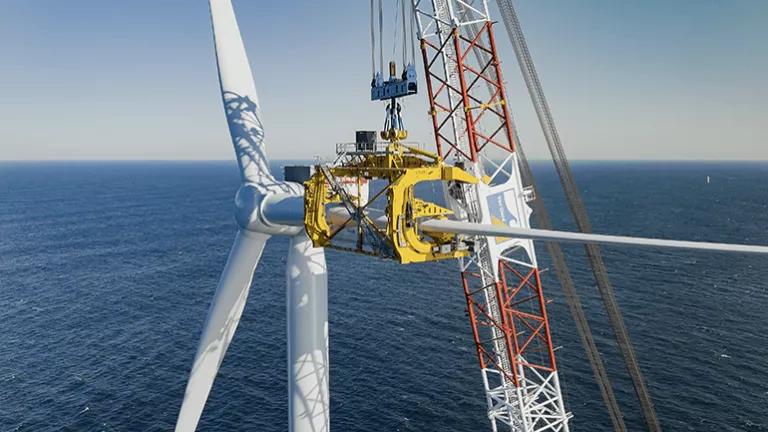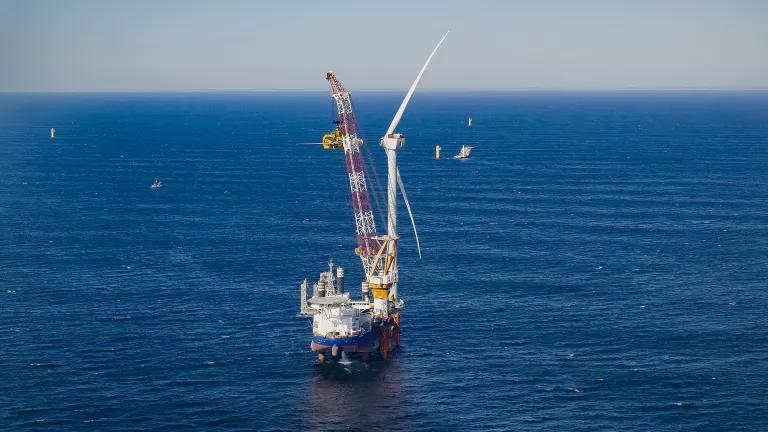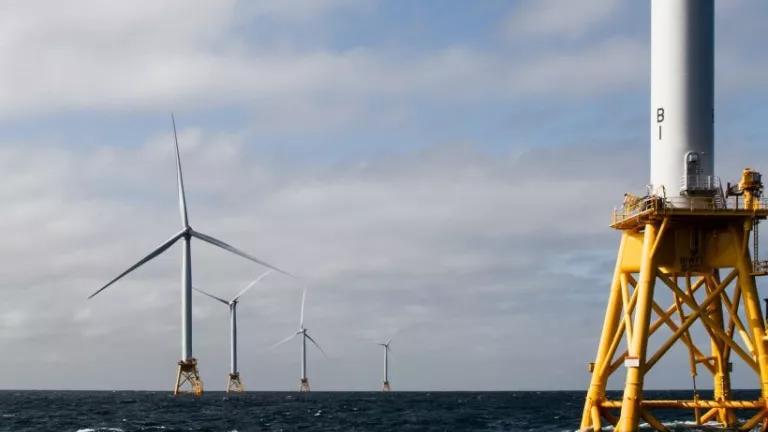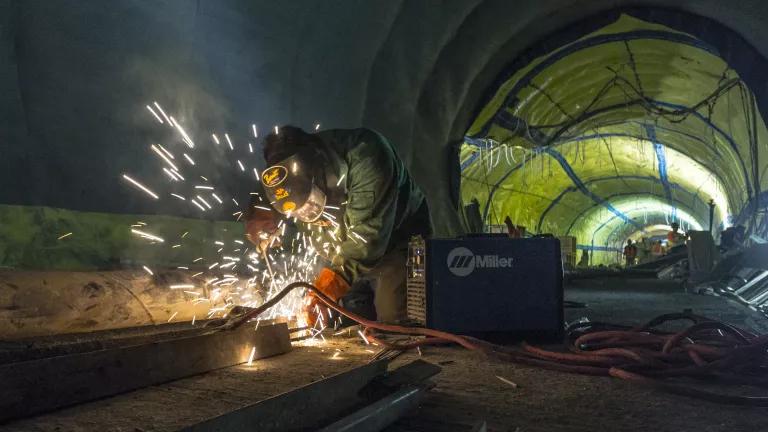South Fork Wind Is Also a Victory for Whales
The first U.S. utility-scale offshore wind project turns on the lights—and was built with strong protections in place for endangered whales.

South Fork Wind
South Fork Wind has become the first U.S. utility-scale offshore wind project in operation in federal waters, helping power thousands of Long Island homes and businesses with much needed clean energy. This is a landmark moment for U.S. energy, and one made even sweeter by the fact that the project construction incorporated enhanced protections for the highly endangered North Atlantic right whale.
It's been a challenging few months of offshore wind industry setbacks, but yesterday’s news highlights the hard work happening offshore to jumpstart cleaner, fossil fuel-free energy. Offshore wind is key to a healthier renewable energy future. It is generally stronger and more consistent than onshore wind, and can be built near major coastal cities, where more than half of the U.S. population lives, and energy needs are high.
Because ocean life is struggling to adapt to climate change—while being stressed from decades of overfishing, pollution and habitat destruction—it’s important for the wind industry to advance in a smart way that protects our valuable and vulnerable ocean life. We can and must ensure wind projects are built and operated in a way that protects our ocean environment and wildlife while producing significant amounts of clean, renewable energy.
The South Fork Wind project completion proves that we can dramatically scale-up offshore wind while also protecting ocean wildlife, particularly the critically endangered North Atlantic right whale.
A landmark 2022 agreement—between South Fork Wind (a joint venture developed by Ørsted and Eversource) and NRDC, the National Wildlife Federation, and the Conservation Law Foundation—incorporated smart vessel speed protections during construction and operations and stronger monitoring measures during noisy construction activities to help protect North Atlantic right whales. Specifically, the agreement included:
- A 10-knot speed limit in right whale habitat for all project-related vessels throughout the project’s lifetime unless an equally effective, scientifically-proven, adaptive speed management plan is in place for times periods not covered by federal regulations. Even a single vessel strike has major ramifications on the ability of the North Atlantic right whale species to survive. Slower speeds significantly reduce the chance of death and serious injury to whales and sea turtles from vessel strikes.
- Stronger monitoring measures during noisy construction activities to allow endangered North Atlantic right whales to feed and migrate undisturbed. Underwater noise can injure animals that are nearby, or drive them away from preferred habitats and interfere with their abilities to feed, communicate, and detect predators. Visual and acoustic monitoring to watch and listen for whales—with the right amount of area clearance and observers near the construction site relative to the amount of noise emitted—is key to protecting whales from harmful noise levels. Added visual monitoring measures at South Fork Wind means more trained protected species observer eyes on the water, helping alert engineers to nearby whales.
With only about 350 individuals remaining, the North Atlantic right whale is in precarious straits. The species is rapidly declining due to vessel strikes and fishing gear entanglements and faces a multitude of additional threats, including underwater noise pollution and malnourishment, all while fighting to adapt to climate change. With the species simply unable to withstand further loss or disturbance, the right whale crisis is not a problem caused by the offshore wind industry, but it is one the industry must face.
South Fork Wind is leading on offshore wind as the first utility-scale project to reach completion in our federal waters and shows we don’t need to choose between clean energy development and wildlife protection. We can build on this important precedent at the start of this vital new U.S. industry.



